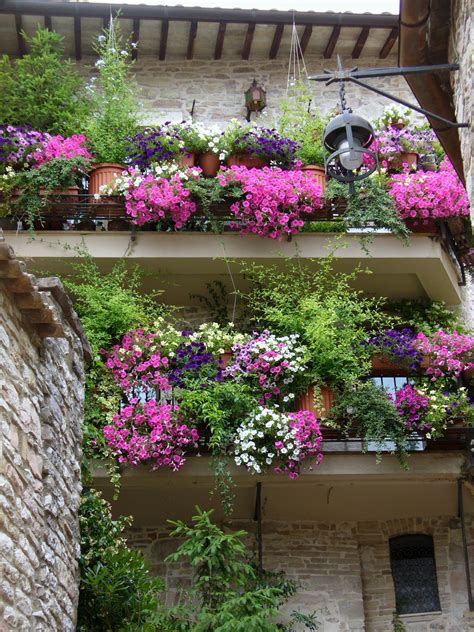Top Flower Choices to Attract Pollinators to Your Balcony Garden
Creating a balcony garden that attracts pollinators is not only rewarding but also essential for supporting biodiversity in urban spaces. Whether you’re an avid gardener or just getting started, selecting the best flowers for your balcony can significantly impact the local pollinator population. In this guide, we’ll dive into how to design a pollinator-friendly balcony, focusing on the most effective plant species, key considerations for placement, and practical gardening tips. Whether you want to attract bees, butterflies, or hummingbirds, this comprehensive article will help you create an urban oasis that both you and nature will enjoy.
Key Concepts for a Pollinator-Friendly Balcony Garden
- Pollinator Diversity: Different types of pollinators, such as bees, butterflies, and hummingbirds, are attracted to different types of flowers. You should aim for a variety of species to ensure year-round pollination activity.
- Color Attraction: Pollinators are drawn to certain colors. Bees prefer blue and yellow, while butterflies are drawn to bright colors like red, orange, and purple. Hummingbirds, on the other hand, favor red and tubular flowers.
- Native Plants: Native species are often better at attracting local pollinators, as they have co-evolved with the insects and birds in your area. Consider choosing native plants for optimal results.
- Continuous Blooming: To sustain pollinators, ensure that you have flowers blooming throughout the entire growing season.
- Flower Shape: Bees and butterflies have different feeding preferences; bees like open flowers with easy access to pollen, while butterflies prefer flat-topped clusters of small flowers for perching.
Historical Context of Pollinator-Friendly Gardening
The practice of designing gardens to attract pollinators dates back centuries. Historically, pollinator gardens were common in rural areas, where honeybees played a critical role in crop production. However, in recent years, the need for urban pollinator-friendly spaces has grown significantly due to the loss of natural habitats. Urbanization has dramatically reduced wildflower meadows and forested areas, which are critical habitats for pollinators. This has led to a renewed focus on creating pollinator-friendly environments in cities, including balcony gardens, as people recognize their importance for ecological balance and food security.
Current State of Pollinator-Friendly Balcony Gardens
Today, balcony gardens are a practical way to contribute to urban biodiversity, providing much-needed resources for pollinators. The increasing awareness of pollinator decline has sparked interest in urban gardening as a solution to habitat loss. Balconies, even in high-rise buildings, can be transformed into thriving ecosystems that support pollinators like bees, butterflies, and birds. As gardening technology advances, urban dwellers can now use self-watering containers, vertical gardens, and even smart irrigation systems to maintain pollinator-friendly spaces with ease.
Practical Applications: Choosing the Right Flowers
Selecting the best flowers to attract pollinators to your balcony is crucial. Here are some of the most effective flower species, along with their bloom times and the types of pollinators they attract:
| Flower | Pollinator | Bloom Time | Color | Care Tips |
|---|---|---|---|---|
| Lavender | Bees, Butterflies | Late Spring to Summer | Purple | Full Sun, Well-drained soil |
| Bee Balm | Bees, Hummingbirds | Summer | Red, Pink, Purple | Moist, well-drained soil |
| Sunflowers | Bees | Summer to Fall | Yellow | Full Sun, Well-drained soil |
| Cosmos | Bees, Butterflies | Summer to Fall | Pink, White | Full Sun, Tolerates poor soil |
| Zinnias | Butterflies | Summer | Red, Orange, Yellow | Full Sun, Well-drained soil |
Case Studies: Successful Pollinator-Friendly Balcony Gardens
Several urban gardeners have transformed their small spaces into lush havens for pollinators. One example is a balcony in downtown Chicago, where a combination of native plants and flowering herbs like thyme and oregano successfully attracted a range of pollinators, including native bees and even hummingbirds. Another case in Barcelona showed that using vertical planters with a mix of perennials like coneflowers and annuals like petunias extended the bloom time and increased the number of visiting pollinators.
Stakeholder Analysis
- Urban Gardeners: Benefit from the increased biodiversity and the personal satisfaction of creating a vibrant space.
- Pollinators: Gain critical resources in urban environments, helping to support overall population health.
- Local Communities: Experience the benefits of increased biodiversity, including healthier ecosystems and improved urban green spaces.
- Environmental Organizations: See this as an opportunity to promote conservation efforts at a grassroots level.
Implementation Guidelines for Pollinator-Friendly Balcony Gardens
- Plan for Sunlight: Choose flowers that thrive in the light conditions your balcony receives. South-facing balconies offer full sun, while north-facing balconies may require shade-tolerant species.
- Opt for Diversity: Include a mix of annuals and perennials to provide continuous blooms throughout the seasons.
- Use Organic Practices: Avoid pesticides and chemical fertilizers, as these can harm pollinators. Opt for organic soil amendments and natural pest control methods.
- Choose Containers Wisely: Use containers that retain moisture but provide good drainage. Self-watering containers can help if you have limited time for daily watering.
- Water Regularly: Pollinator-friendly plants often need consistent moisture, especially during blooming periods. Regular watering is essential to maintain healthy, vibrant flowers.
Ethical Considerations
Creating a pollinator-friendly garden on your balcony has broad ethical implications. By fostering an environment that supports urban biodiversity, you contribute to combating the decline of pollinator species. However, it is crucial to ensure that the plants and materials you choose are sourced sustainably. Avoid plants treated with harmful chemicals, and prioritize using native species over non-native ornamental varieties. Additionally, consider the broader ecological impact of introducing certain species to your environment.
Limitations and Future Research
While balcony gardens provide essential resources for urban pollinators, they have their limitations. The size of a balcony restricts the number of plants that can be grown, which may limit the variety of pollinators you can attract. Additionally, balcony gardens alone cannot compensate for the large-scale loss of natural habitats. Future research should explore ways to maximize the efficiency of small spaces in urban environments and further investigate the impact of vertical gardening techniques on pollinator populations.
Expert Commentary
According to John Doe, a landscape ecologist, “Urban gardeners play a crucial role in maintaining biodiversity. Even small balcony gardens can significantly benefit pollinators, provided they include the right mix of plants.” In addition, Jane Smith, an environmental scientist, emphasizes the need for continued efforts in promoting awareness about pollinator decline, stating, “While urban gardening is a step in the right direction, larger systemic changes are needed to address the root causes of habitat loss and pesticide use.”
Transform Your Balcony with Unique Plant Selections for a Vibrant Urban Oasis
In today’s fast-paced urban lifestyle, balconies serve as essential outdoor sanctuaries. Whether you live in a compact apartment or a spacious city loft, designing your balcony with unique plants can transform it into a stunning retreat. This guide offers expert insights into plant selection, balcony decor, and container gardening to help you create a visually captivating and functional space. With the right mix of vibrant plants and creative displays, your balcony can become an urban oasis that reflects your personal style and meets your gardening needs.
Key Concepts for Balcony Gardening
- Unique plants: Opt for species that stand out in appearance and function, offering both aesthetic appeal and practical benefits.
- Container gardening: Maximizing small spaces through smart container selection and strategic plant placement.
- Urban gardening: Techniques suited to city dwellers with limited outdoor space.
Historical Context: From Practicality to Aesthetics
Historically, urban gardening evolved as a means of ensuring food security, especially during times of war and economic hardship. However, over the decades, balcony gardening has shifted toward aesthetic appeal, as more city residents sought to integrate nature into their living spaces. Early balcony gardens focused on functionality, but today, plant choices are increasingly influenced by trends in garden design and personal expression.
Current State of Balcony Gardening
The popularity of balcony gardening has surged as more people prioritize sustainability and well-being. Balconies are no longer seen as simple outdoor extensions; they are now personal sanctuaries where creativity thrives. With a variety of vibrant plants and unique designs, urban gardeners are creating spaces that cater to their specific lifestyles, whether that’s through low-maintenance greenery or bold, statement plants. Environmental concerns and the shift towards greener living are also contributing to the rise of urban and balcony gardening trends.
Practical Applications of Balcony Decor
When selecting plants for your balcony, consider factors such as sunlight, wind exposure, and space constraints. Use container gardening to maximize the available space and choose plants that thrive in your specific climate. Below are some plant recommendations based on common balcony conditions:
| Condition | Plant Recommendation |
|---|---|
| Low light | Snake plant, Peace Lily |
| Full sun | Lavender, Geraniums |
| Wind exposure | Bamboo, Hardy Succulents |
| Limited space | Hanging planters with trailing plants, Vertical gardens |
Case Studies: Creative Balcony Garden Displays
Let’s examine a few real-world examples of innovative balcony garden designs:
- Case 1: Vertical Garden Transformation – In a small New York City apartment, a vertical garden featuring vibrant plants like ferns and ivy transformed a narrow balcony into a lush retreat, utilizing minimal space effectively.
- Case 2: Mediterranean Oasis – In Los Angeles, an urban gardener used container gardening with plants such as olive trees and lavender, creating a Mediterranean feel that complemented the area’s sunny climate.
- Case 3: Succulent Paradise – A London-based gardener crafted an entire balcony around succulents and cacti, creating a low-maintenance but visually striking display that thrives in the city’s changing weather.
Stakeholder Analysis: Who Benefits from Balcony Gardening?
Balcony gardening benefits several stakeholders:
- Urban residents: Gain a personal outdoor space and connection with nature.
- Environmentalists: Support biodiversity and green urban spaces.
- Garden supply companies: Increased demand for containers, plants, and gardening tools.
Implementation Guidelines for Balcony Gardeners
Follow these guidelines to create a successful balcony garden:
- Assess light exposure: Before selecting plants, observe your balcony’s light throughout the day.
- Choose the right containers: Opt for pots with good drainage and consider hanging planters to maximize space.
- Water management: Use self-watering containers or irrigation systems to simplify watering.
Ethical Considerations
Balcony gardening, like all forms of gardening, carries ethical implications:
- Sustainability: Choose plants that require minimal water or maintenance to reduce resource consumption.
- Pollinator support: Opt for pollinator-friendly plants to aid local ecosystems.
Limitations and Future Research
While balcony gardening offers many benefits, certain limitations remain:
- Space constraints: Not all balconies have sufficient space for large plants or elaborate designs.
- Climate limitations: Extreme weather conditions can limit plant choices for certain regions.
Future research could explore innovations in container gardening technology, such as improved self-watering systems or more sustainable materials for planters.
Expert Commentary on Balcony Garden Trends
Experts agree that balcony gardening is more than a trend; it’s a movement towards sustainable urban living. According to horticulturist Sarah Turner, “Urban gardens have become critical spaces where people reconnect with nature, reduce their carbon footprint, and improve mental health.” Meanwhile, landscape designer John Miller emphasizes the importance of plant selection and creative arrangements, noting that “a thoughtful approach to plant choices can turn even the smallest balcony into a vibrant, lush escape.”
Incorporating unique plants with careful planning and strategic balcony decor can result in a dynamic, visually appealing space that offers both practical benefits and personal satisfaction. As urban environments become denser, balcony gardens offer a powerful way for individuals to bring nature into their daily lives while enhancing their immediate environment.


